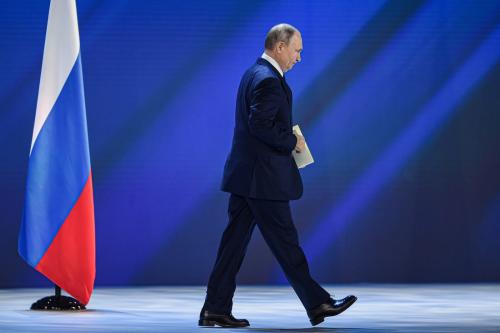Russia sanctions: no one knows who they work for
History has taught that global conflicts and their economic consequences consolidate new hegemonies... The current war may well consolidate a Eurasian bloc led by the dragon of the East.
- Opinión

Sanctions on Russia stemming from the war with Ukraine will affect the European and Western economies and could strengthen Sino-Russian relations. In the consequences of the war's non-Armis strategies, Western hegemonic strength and the global consolidation of the Eurasian bloc led by China and Russia would be at stake.
On the morning of 24 February 2022, Vladimir Putin announced a military operation that would advance into western Ukraine. Troops began operating under orders to denazify the country. The order to mobilise the menacing Russian army, which occupied his side of the border with more than 100,000 troops for more than two months, triggered the war. On the same day, oil, gas and other commodity prices soared on the markets. The relentless uncertainty of the conflict was already pushing them upwards in a constant bidding process fuelled by tensions. Oil hit USD 100 for the first time in 7 years.
The conflict reached a new high, and the West began to act. US concerns of a possible invasion ceased to be concerns. The geopolitical confrontation with its historic adversary began with the accelerated implementation of what Joe Biden said would be a package of economic sanctions never before seen [...by Putin...]. Europe accompanies the US in its onslaught, but dependence on Russian natural resources and close economic relations with some of its members slows down the sanctions. The West faces a strong Russian economy, better prepared for sanctions, and China as its ally. Only 11% of international reserves are held in US and British banks. (Statista)
Europe's most evident close relationship with Russia is its energy dependence. The conflict has exacerbated Europe's concerns about severe gas shortages on top of the record electricity prices experienced in the region. During the escalation of the war and before the military operation, European gas storage capacity was underutilised by 62 per cent. Russia supplies more than 40 per cent of all gas imported by the EU. Several significant pipelines run entirely through Ukrainian territory.
The so-called Nordstream 2 pipeline, an extension of Nordstream 1 that crosses the Baltic Sea to Lubmin in northern Germany, is in the middle of the conflict. The pipeline is in the approval phase at the hands of the German authorities to become operational. Although Europe began to change its energy generation sources, gas remains one of the most important.
The mega-project would expand Russia's supply to meet the growing demand for gas for heating, especially during the winter, a season that Russians have historically been able to exploit during wartime successfully. On 22 February, the German authorities suspended the approval of Nordstream2. Joe Biden had previously warned of this. Gazprom PJSC signed a contract to design the Soyuz Vostok pipeline across Mongolia toward China on March 2, 2022. When Soyuz Vostok is fully completed, it will carry as much as 50 billion cubic meters of natural gas per year to the Asian nation, according to Bloomberg
This news was first made public January 12 by Deutsche Welle warning that China is moving to natural gas as part of its drive to achieve carbon neutrality by 2060. It is the fastest growing gas market in the world and will go from importing 331 bcm in 2021 to 526 bcm by 2030 and 620 bcm by 2040.
The package of financial sanctions is another of the West's aggressive arrangements. Sanctions on high-profile Russian politicians and citizens comes packaged with the exclusion of large Russian banks from the international payment system SWIFT. The US and the European Union discussed the proposal to pull Russia out of SWIFT made by Czech President Milos Zeman, which ruled it out a month before the incursion into Ukrainian territory, probably because of the consequences.
As with the energy issue, concerns about excluding Russia from SWIFT are highly relevant. Its exclusion could strengthen payment systems such as China's (CIPS) and consolidate relations with Asia, particularly China. In addition, European creditors would find it impossible to pay debts acquired by Russian entities. The never-before-seen economic sanctions package will not go unnoticed economically in Europe. Germany, the Netherlands, Poland, Italy, and France, major trading partners with whom their trade exceeded €152 billion[1] in 2021, will also experience the effect of the sanctions.
The conflict between Russia and the West is incomparable to any other today. Geopolitically confronting Venezuela, Iran, North Korea, Cuba, or Nicaragua is not the same as confronting Russia. For years, Russia has been strengthening its geo-economy and developing its military. Its international reserves have increased by 70% since 2015 and have been diversifying away from the dollar's dominance. The West froze nearly 50 per cent of its international reserves. As a result, it is foreseeable that Russia will shift to other currencies in its reserves, such as the Chinese renminbi, which accounts now for only 13% of its reserves. Russia has been fearlessly facing the potential sanctions that the West has warned of. The conflict could strengthen the Russia-China economic bloc and the Asia bloc. The emergence of bipolar multilateralism is neither economically nor geopolitically convenient for US hegemony.
History has taught that global conflicts and their economic consequences consolidate new hegemonies; England and its war against the French and the United States after the World Wars. In 2022, although it is clear that Russia is not the next economic power, China is. The current war may well consolidate a Eurasian bloc led by the dragon of the East.
OBELA, Num 8, Año 2022, March 4th
- Jameson Mencías, Collaborator of OBELA, collaborator of CELAG and Latindadd.
[1] Corresponds to the total value of imports from Russia and exports to Russia of Russia's 5 largest trading partners in 2021. Taken from Russia-EU – international trade in goods statistics, updated to February 2022.
